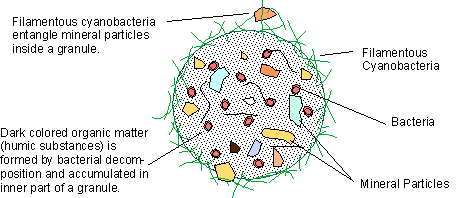 CRYOCONITE (‘ice dust’) holes are small pock-like depressions that are strewn over the surface of glaciers, looking much like a pristine snow drift after you’ve thrown a handful of gravel at it. Such melt-holes have been documented on glaciers at both poles, and on other glaciated regions such as Iceland, Greenland, Canada and the Himalayas. According to one account, at least, cryoconite holes have been a bane to scientists working on the Greenland ice sheet, the holes being typically full of slushy ice, and big enough to step in by accident. However, cryoconite holes have been the subject of much debate in recent years; a debate centring on their role as contributors to glacial melting.
CRYOCONITE (‘ice dust’) holes are small pock-like depressions that are strewn over the surface of glaciers, looking much like a pristine snow drift after you’ve thrown a handful of gravel at it. Such melt-holes have been documented on glaciers at both poles, and on other glaciated regions such as Iceland, Greenland, Canada and the Himalayas. According to one account, at least, cryoconite holes have been a bane to scientists working on the Greenland ice sheet, the holes being typically full of slushy ice, and big enough to step in by accident. However, cryoconite holes have been the subject of much debate in recent years; a debate centring on their role as contributors to glacial melting.
The interesting feature about these melt-holes is the cryconite itself, which is found at the bottom. Cryoconite is a dark material comprised of organic and inorganic debris that melts into the ice. It is the ability of this dark material to absorb solar heat, and so raise the local temperature, that results in the formation of such melt holes and thus represent a source of glacial erosion. However, fascinatingly, within these handfuls of ‘dust’ are a community of micro-organisms that include bacteria, viruses and algae; and depending on location, also tardigrades, rotifers, nematode worms, protozoa, copepods and insect larvae (you can find out about some of the hole-life here).
Structure of a cryoconite particle.
Whilst there is nothing inherently ‘unnatural’ about the presence of glaciatic cryoconite, scientists are none the less curious to understand the role it plays in both glacial melting and nutrient cycling. A University of Sheffield glaciologist, Dr Andy Hodson, is the winning recipient of this years Royal Geographical Society’s Peter Fleming Award, with a project to determine the extent to which microbial life may be accelerating deglaciation; a process that results in the liberation of trillions of microorganisms, but that also provides life sustaining matter, via meltwater, to other parts of the glacial ecosystem.
Despite earlier studies showing the role that cryoconite plays in several biogeochemical processes, including nitrogen fixation (as well as fixing of other nutrients), the passage of carbon through these ecosystems has not been quantified. A research study lead by Dr Alexandre Anesio, Senior Lecturer in Low Temperature Biogeochemistry at Bristol University, has for the first time reported simultaneous quantitative measurements of primary production (the production of new organic matter from raw materials) and respiration (the use of oxygen to create energy, resulting in the release of CO2) on different glacias of the Earth.
Primary production and respiration are the main components of the carbon cycle in aquatic ecosystems and net heterotrophy (i.e. where the community respiration exceeds primary production) is often used to infer CO2 export to the atmosphere.
Not only did they find that primary production and respiration in cryoconites (in summer) was comparable to soils found in warmer climates, but the ratio of primary production to respiration indicated that they were an autotrophic system. What this means is that these ecosystems are, by and large, self-sustaining or ‘self-feeding’, able to produce new organic material from inorganic raw materials, thus are essentially photosynthetic, like plants.
The finding that cryoconite ecosystems may be autotrophic ‘self-feeders’ has a number of consequences:
Firstly, our results indicate that the combined activity of primary producers and bacteria in cryoconite holes results in the accumulation of dark-coloured organic matter, which may contribute to further absorption of solar radiation and thus enhance glacial melting.
Secondly, the excess organic matter can be exported during the summer melt season to other ecosystems, including the oceans, and thus sustaining life elsewhere.
Autotropic systems are important systems as they are net producers of useful organic nutrients, but more importantly, unlike heterotropic systems where CO2 is released into the atmosphere, autotropic systems fix CO2from the atmosphere. The researchers go on to up-scale their findings, indicating that on a global basis cryoconite holes have the potential to fix as much as 64 Gg of carbon per year. However, for their calculations they excluded the polar regions, as polar cryoconites tend to have ice-caps over their entrances, which keep them isolated from the atmosphere for years (though the systems within them are none the less still autotrophic).
The researchers end with a conclusion that is something of a double-edged sword:
Although primary production in cryoconites can be considered a significant sink for CO2…particulate organic carbon accumulation in cryoconite holes may ultimately contribute to further absorption of solar radiation and glacial melting.
—
ANESIO, A., HODSON, A., FRITZ, A., PSENNER, R., & SATTLER, B. (2009). High microbial activity on glaciers: importance to the global carbon cycle Global Change Biology, 15 (4), 955-960 DOI: 10.1111/j.1365-2486.2008.01758.x
Like this article? Please consider submitting it to Open Lab 2009:


